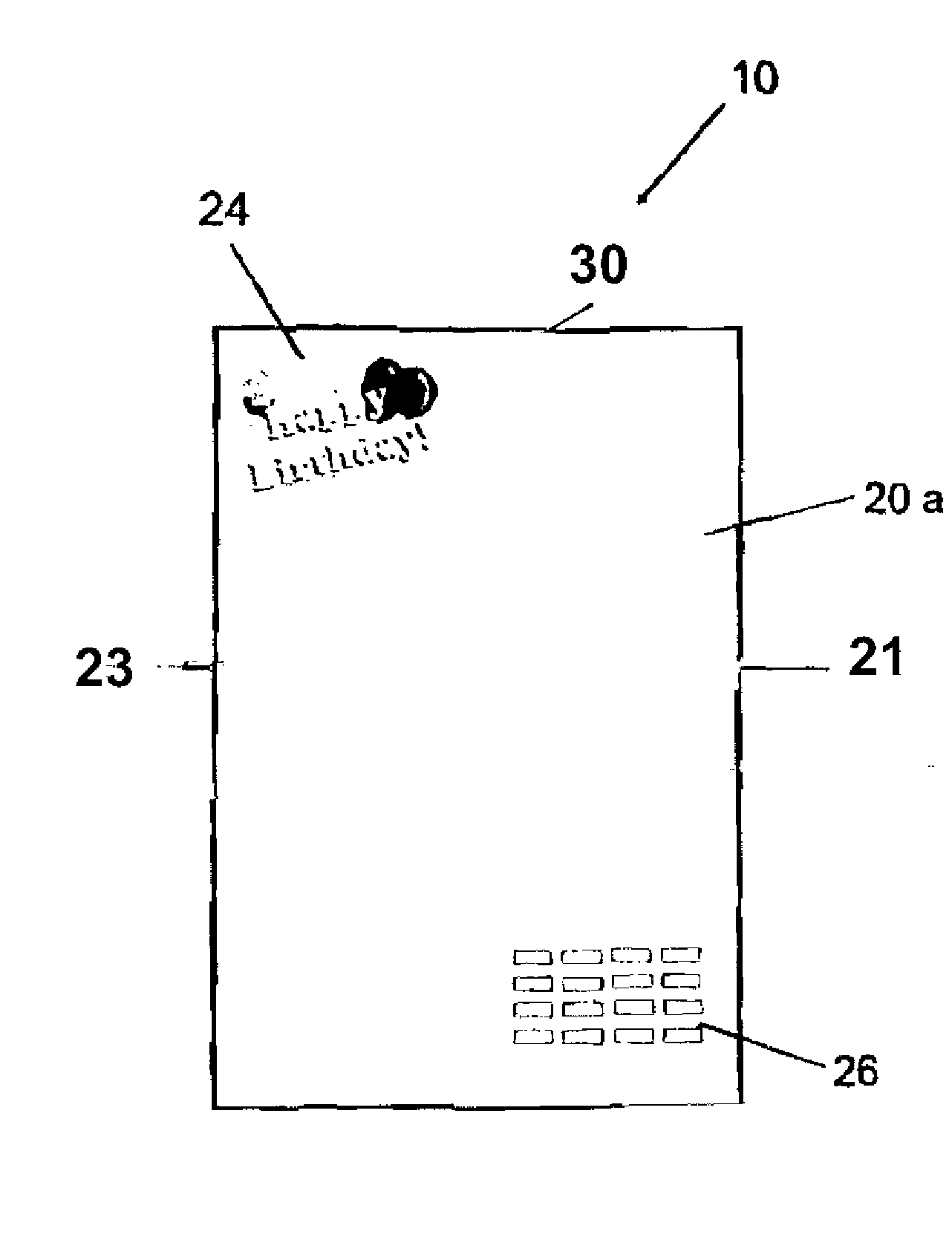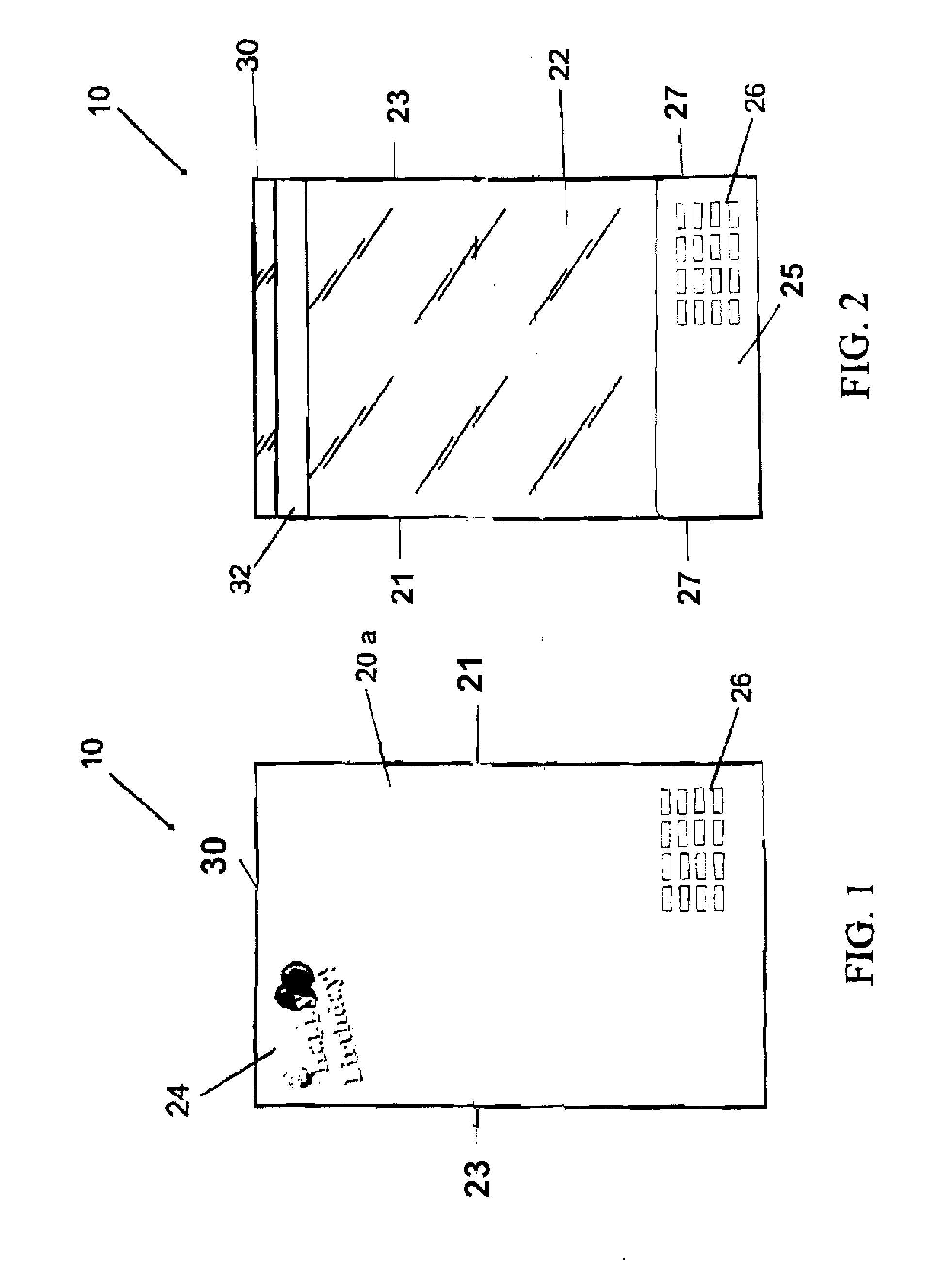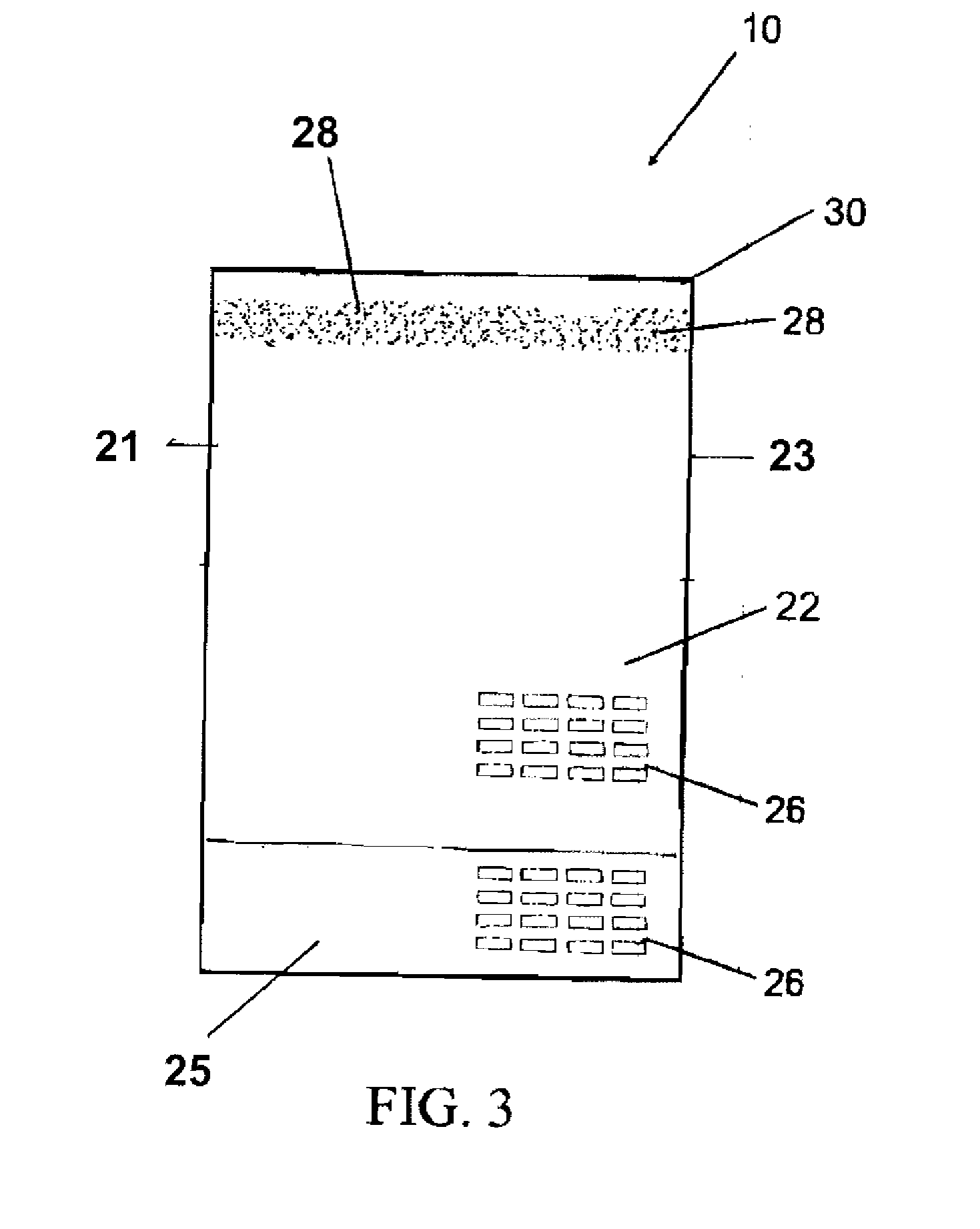Self-sticking bibs and method of making
- Summary
- Abstract
- Description
- Claims
- Application Information
AI Technical Summary
Benefits of technology
Problems solved by technology
Method used
Image
Examples
Embodiment Construction
[0040] Referring now to the drawings, preferred embodiments will now be described. In FIGS. 1, 2, 4 and 7 a bib 10 is shown front and rear consisting of a rectangular configuration composed of two overlying sheets (layers) of 19 gram cellular tissue 20a and 20b on the front side and polyethylene (plastic layer) 22 on the rear side. The tissue 20 can be imprinted with any suitable pattern or motif 24 and has been embossed with small rectangular depressions 26 that have been heat sealed to the polyethylene sheet 22. On the rear side of the bib, see FIG. 2, the polyethylene sheet 22 has an adhesive 28 stripe coated along or adjacent to its top edge 30 extending from one side edge 21 to the other side edge 23, and is covered with a release tape in the form of a removable cover strip 32, e.g. glassine paper. To use the bib, the cover strip 32 is removed and the bib 10 attached or stuck to the user by the adhesive 28. The cellular tissue sheet 20a is facing outwardly to catch and absorb a...
PUM
 Login to View More
Login to View More Abstract
Description
Claims
Application Information
 Login to View More
Login to View More - R&D Engineer
- R&D Manager
- IP Professional
- Industry Leading Data Capabilities
- Powerful AI technology
- Patent DNA Extraction
Browse by: Latest US Patents, China's latest patents, Technical Efficacy Thesaurus, Application Domain, Technology Topic, Popular Technical Reports.
© 2024 PatSnap. All rights reserved.Legal|Privacy policy|Modern Slavery Act Transparency Statement|Sitemap|About US| Contact US: help@patsnap.com










